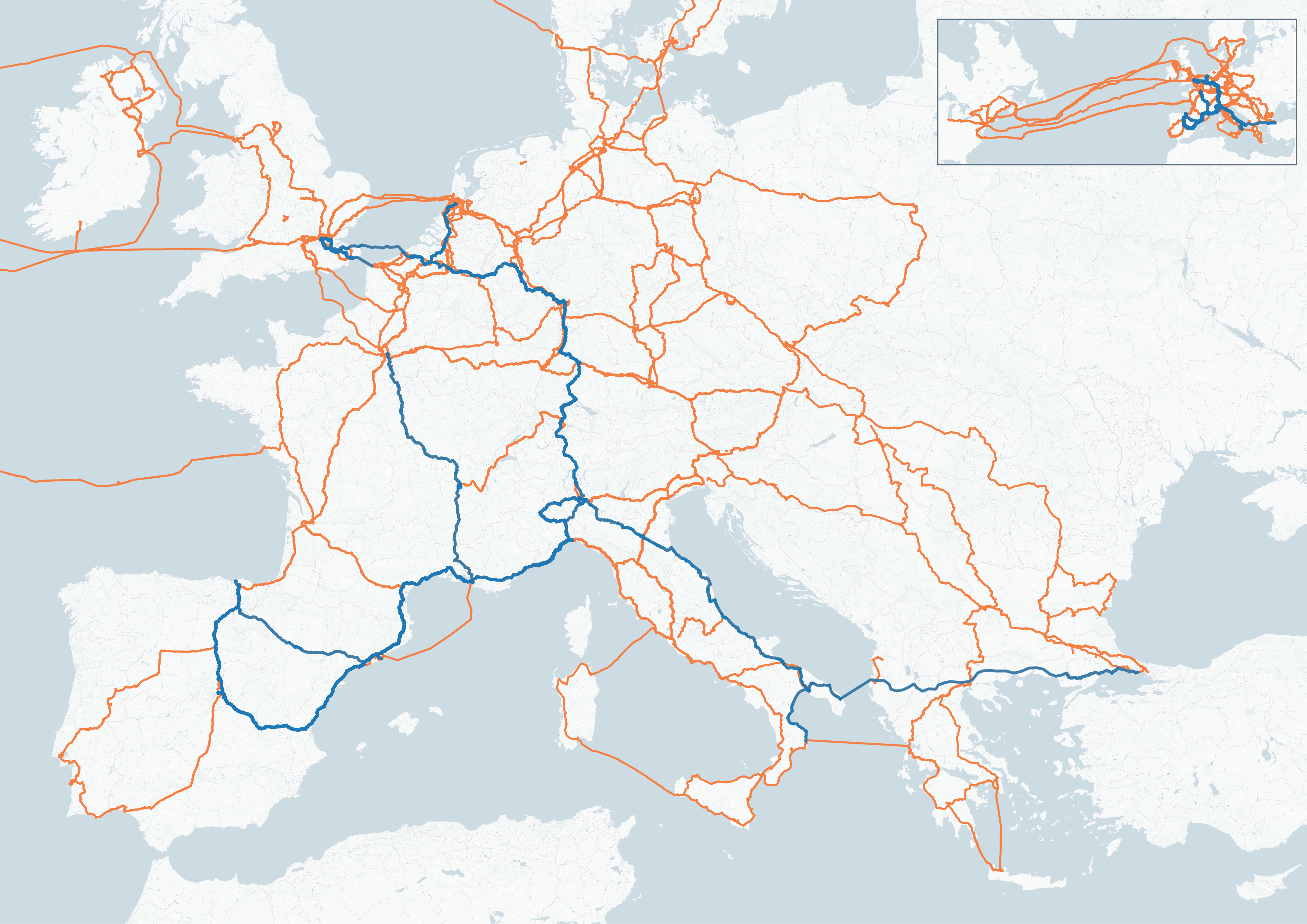19/12/2023
In the ever-evolving landscape of telecommunications, the demand for faster and more reliable connectivity has never been higher. As technology advances and data usage soars with traffic predicted to double every 3 years, according to TeleGeography's 2023 Transport Network Forecast - telecom networks face the challenge of keeping up with the growing demands of users across various sectors. EXA Infrastructure (EXA), a leading data centre (DC) to DC connectivity provider, recognises the critical role that fibre optics play in shaping the future of telecommunications.
In this blog, we delve into the intricacies of the Shannon Limit and why the use of high-performing G.652D dark fibres is imperative in European telecom networks.
The Shannon Limit: Unveiling the Constraints
Claude Shannon's groundbreaking work in information theory led to the formulation of the Shannon Limit, a fundamental concept that establishes a theoretical upper limit on the error-free transmission of information over a communication channel. This limit is influenced by various factors, with signal-to-noise ratio playing a pivotal role. As seen on Infinera's blog, this law puts a cap on the amount of information that can be reliably transmitted over a given channel.
In the context of optical communication, the Shannon Limit highlights the importance of maximising the signal power while minimising noise power. This has profound implications for the design and performance of fibre optic networks, especially in the context of long-distance terrestrial connections and submarine cable systems as explained by Pioneer Consulting.
The Role of G.652D Dark Fibres
To address the challenges posed by the Shannon Limit, network operators turn to advanced fibre optic technologies. Low attenuation G.652D dark fibres emerge as a leading solution due to their superior performance characteristics. These fibres, designed to minimise attenuation, play a crucial role in pushing the boundaries of data transmission capacity.
EXA understands the significance of G.652D dark fibres and has strategically incorporated them into its network design and operations. By utilising these high-performing fibres, EXA ensures that its network can deliver and sustain unparalleled speed and reliability, meeting the demands of enterprise clients, NGOs, telecom carriers, and hyperscalers alike.

EXA's Network Map with footprint (orange) & G.652D owned cable (blue)
Low Attenuation: A Key Enabler
Attenuation, the loss of signal strength as it travels through the fibre optic medium, is a critical factor in determining the performance of a network. Low attenuation fibres significantly reduce signal loss, enabling data to travel longer distances without compromising quality. Besides EXA Infrastructure design, by minimising the numbers of connectors, splices, as well as the number of events during the first 20 kilometres of each span, not only when building its network but also and more importantly during its operational life, maximises the benefits.
As discussed in Ciena's insights, the evolution of submarine cable networks emphasises the need for low attenuation to support long-haul connections. EXA Infrastructure recognises this imperative and has meticulously designed its network with very low attenuation fibres, already committing to improve over 4200km, and to deploy over 3,800km of new routes, well ahead to any other provider in Europe. This commitment to low attenuation ensures that EXA's network can cater to the current and future needs of its diverse clientele.
Benefits for All Network Users
The advantages of EXA’s approach extend beyond technical considerations. By pushing the boundaries of the Shannon Limit through the use of G.652D dark fibres and low attenuation designs, EXA creates a network that benefits all its users.
- Enterprises: EXA's enterprise clients enjoy enhanced connectivity, ensuring seamless operations and efficient data transmission for mission-critical tasks.
- Governmental and Non-governmental Organisations: Those organisations benefit from a reliable and high-capacity network, facilitating collaboration, data sharing, and communication for their global initiatives.
- Telecom Carriers: Telecom carriers experience improved efficiency and reduced signal degradation, resulting in higher customer satisfaction and increased competitiveness in the market.
- Hyperscalers: For hyperscalers dealing with massive data volumes, EXA Infrastructure's network provides the foundation for rapid and uninterrupted data transfer, supporting their ever-expanding digital ecosystems.
In the dynamic realm of telecommunications, EXA stands as a beacon of innovation and foresight. By understanding and addressing the challenges posed by the physical limitation of optical communication, EXA has crafted a network that not only meets the current needs of its diverse clientele but also paves the way for future advancements in connectivity.
Through the strategic use of G.652D dark fibres and a commitment to low attenuation, EXA Infrastructure ensures that its network is at the forefront of technological excellence. As the demand for faster and more reliable connectivity continues to rise, EXA's vision for a future-proof network positions it as a leader in shaping the digital landscape of Europe and beyond. In the journey towards a connected future, EXA is not just keeping up; it's setting the pace for others to follow.
Related Articles
Navigating the Cloud: The Crucial Role of Scalable Network Infrastructure in Tech Success
In today's cloud-centric and application-focused environment, high capacity and scalability have become key factors to success - even more so when considering the substantial size of data sets needing to be transported and processed, which range from hundreds of Gigabits to Terabits.
FIA Expo: Reflections from a busy week – where speed really matters
When I think about what really matters to our FS customers, the same thought comes up time and time again: speed still rules, but it’s no longer just about speed for speed’s sake.
EXA Infrastructure: the new brand to watch for enhanced connectivity
EXA Infrastructure might be a new name in the market, but behind the new brand there is a solid and leading fiber infrastructure service provider.
